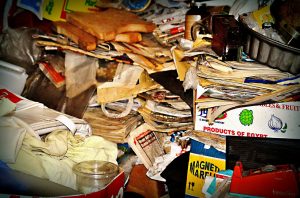8.1 Obsessive-Compulsive and Related Disorders
We all have certain “habits” that are unique to us. Habits are often unconscious pattern recurrent behavior that is acquired through frequent repetition. Our habits could be positive or negative, for example, picking your teeth in public or eating with your mouth open, picking your nose. Good examples may include, making your bed in the morning, pushing the on button to make your morning coffee or tea. Where as Obsessive-compulsive disorder (OCD) is a common and chronic mental illness that causes unwanted repeated thoughts or sensations (obsessions) or the urge to do something over and over again (compulsions). Some people can have both obsessions and compulsions. These symptoms interfere with every aspect of one’s life, personal relationships, work, school and within their community.
A person who has obsessive thoughts might feel that certain numbers of ceiling tiles are “good” or “bad.” The most common compulsive habit might is washing ones hands numerous times after touching any object that may be dirty. Have you ever seen the movie “As Good as it Gets?” starring Jack Nicholson, Helen Hunt? Awesome movie. Nicholson was diagnosed with OCD. The key is a person doesn’t want to “think or do” what ever behavior; many people report they feel “powerless” to stop.

The disorders in this classification are commonly grouped together because they have several overlapping symptoms (repetitive thoughts or behaviors). In addition, clients can be diagnosed with MORE THAN ONE of the previously stated disorders. It’s important to note that OCD and one of it’s related disorders can be diagnosed at any age, with that being said, most symptoms begin during emerging adulthood. According to the National Institute of Mental Health, Obsessions are repeated thoughts, urges, or mental images that cause anxiety. Common symptoms include:
- Fear of germs or contamination
- Unwanted forbidden or taboo thoughts involving sex, religion, or harm
- Aggressive thoughts towards others or self
- Having things symmetrical or in a perfect order
Where as Compulsions are repetitive behaviors that a person with OCD feels the urge to do in response to an obsessive thought. Common compulsions include:
- Excessive cleaning and/or handwashing
- Ordering and arranging things in a particular, precise way
- Repeatedly checking on things, such as repeatedly checking to see if the door is locked or that the oven is off
- Compulsive counting
- Please go to page 235 in your DSM 5 to find specific diagnostic criteria, diagnostic features, differential diagnosis and coding.
National Institute of Mental Health: Obsessive-Compulsive Disorder
Based on research, it appears that OCD and it’s related disorders can begin as early as age 2, but generally diagnosed during emerging adulthood. OCD is caused by a several factors which include biological or genetics and environmental factors.
Assessment of OCD
Remember you are assessing if obsessive thoughts or ritualistic behaviors are occurring longer than 1 hour per day, if they are excessive and are the stated behavior causing significant distress for your client. When assessing, generally we use several methods in gathering data. First, the initial interview, in addition to self-reports in conjunction with a behavioral assessment. I initially start off with a semi-structured interview using the Yale Brown Obsessive Compulsive Scale and Symptom checklist (I have heard there is an he Children’s Yale-Brown Obsessive-Compulsive Scale, I have never used. Those of you who will be working with children, it’s worth looking into this assessment.) Follow up with a self-report assessment; again there are several. I have only used the Yale Brown Compulsive Scale and Symptom checklist and Compulsive Activities Checklist.

